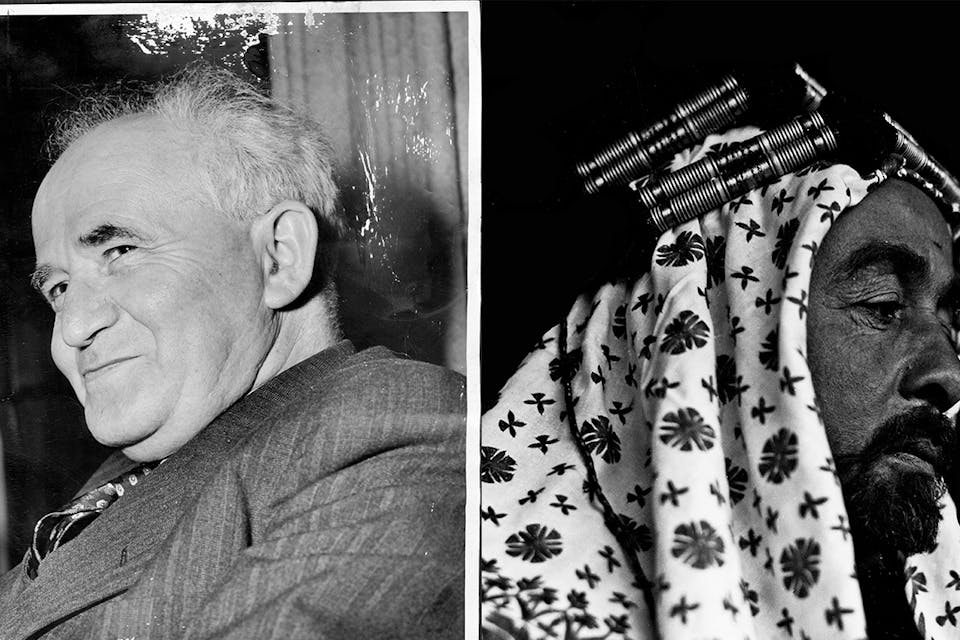
November 17, 2020
The Parallel Lives of David Ben-Gurion and Abdullah bin Hussein
Born within four years of each other, David Ben-Gurion and Abdullah bin Hussein emerged out of the same political womb to forge Israel and Jordan in battle. Both nations should be grateful.
Seventy-five years ago, a world map would not have shown the names of either Israel or Jordan. Both states, the one Jewish, the other Arab, are relatively new, the products of two national movements. Although both had many founders, two men stand out as founding fathers: David Ben-Gurion, the first prime minister of Israel, and Abdullah bin Hussein, the first king of Jordan.
The two men, born within four years of each other in the 1880s, forged their respective states in battle and established them on firm foundations. Although one is a democracy and the other a monarchy, both emerged out of the same political womb: the British mandate for Palestine (including Transjordan), conferred by the League of Nations in 1922. In that sense, the two states were twins—far from identical twins but still inextricably tied to each other in conflict or cooperation. As for the founding fathers themselves, they never met face to face, but their personal stories are inseparable.
Those stories unfolded over four historical stages. First, as young men, both Abdullah and Ben-Gurion were drawn into the early-20th-century whirlwind of a world war, the collapsing Ottoman empire, and the stirrings in the Middle East of national revival. Next, both spent the better part of two decades, the 1920s and 1930s, building up their personal and political base in the shadow of other men. Then, in the 1940s, a second world war and a second retreating empire, in this case Great Britain, put the two men on a collision course. Finally, in 1948-49, in the aftermath of that collision, they reached an armistice and a de-facto partition of the contested land, and in so doing realized the better part of their respective dreams.